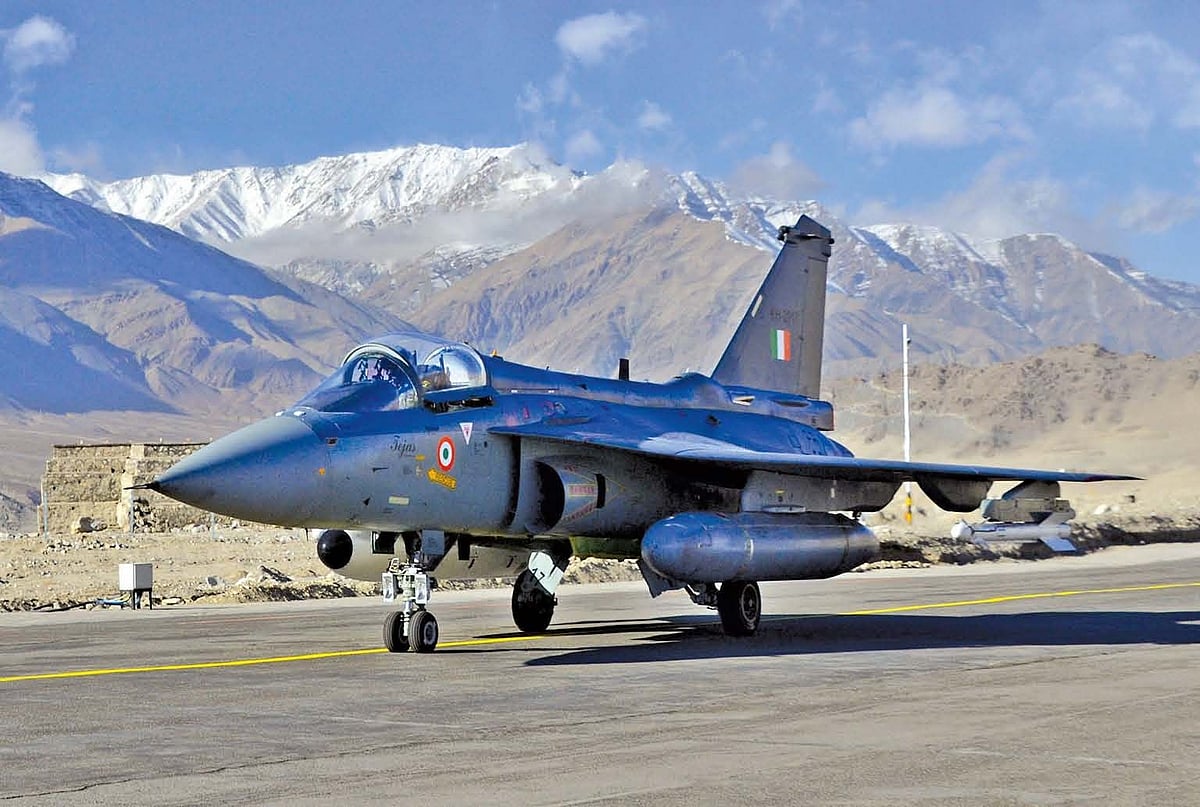
More LCA Tejas For The IAF: $5.2 Billion Deal For Mark 1A Variant To Be Signed By December, Says Report
Mark 1A variant of the LCA will be a more capable fighter than Mark 1, and will come with around 40 major and minor improvements.
A $5.2 billion contract for around 83 light combat aircraft (LCA) Tejas Mark 1A variant is likely to be awarded to Hindustan Aeronautics Limited (HAL) by December this year, according to a report in Livefist. The final paperwork for the deal, the report says, is complete and awaiting clearance from the Ministry of Finance.
The Ministry of Defence is also looking at a proposal to manufacture 18 LCA Mark 1 final operational clearance trainer aircraft to keep the Tejas assembly lines up and running till the deal for 83 Mark 1A variants is signed.
Tejas Mark 1A
LCA Mark 1A will be a more capable fighter than the original Mark 1 variant.
Mark 1A variant of the LCA will come with around 40 major and minor improvements over Mark 1. These improvements include the introduction of an active electronically scanned array radar for detection of enemy aircraft at greater ranges and resistance to jamming, and a faster turnaround of each aircraft after each sortie.
Earlier, the IAF had ordered at least 40 Mark 1 LACs. Around 16 of these aircraft are already in squadron service with the Indian Air Force (IAF). The first LCAs were inducted into Number 45 Squadron ‘Flying Daggers’ in 2016. The second Tejas squadron, Number 18 Squadron ‘Flying Bullets’, was operationalised in May.
HAL has improved the rate of production of LACs at its facility. It has set up a second assembly line, Managing Director of HAL, R Madhavan, has said.
“Our target rate is 16 [LCA fighters] per year, for which a second line has already been set up now. We can easily ramp up to 16-20 per year as and when we receive the 83 LCA order,” Madhavan has been quoted as saying.
HAL is also involved in two other Tejas-linked fighter programmes — Tejas Mark 2 and twin engine deck based fighter (TEDBF) derived from the naval version of LCA.
Contrary to what its name suggests, Tejas Mark 2, a significantly modified version of LCA Mk1, will actually be a medium-weight fighter aircraft.
Among other changes, the GE F404 engine in LCA Mk1 will be replaced with the more powerful F414 turbofan, and canards will be added behind the cockpit.
While the new F414 turbofan engine will provide the fighter more thrust, canards will improve its manoeuvrability significantly.
As a result of the modifications being made by the Aeronautical Development Agency, the Mk2 variant will have higher payload capacities, giving it more weapon delivery options, and will carry more fuel, which will increase its range.
IAF may induct 12 LCA Mk2 squadrons (around 200 aircraft).
TEDBF will be derived from the naval version of the LCA developed as a technology demonstrator for the Indian Navy.
The naval variant of the LCA has undergone a series of tests, including a series of arrested landings on the deck of aircraft carrier INS Vikramaditya in January this year to demonstrate the capability of its landing gear among other things.
Earlier, ADA was to develop a new version of the naval LCA.
However, due to design limitations, which were further complicated by the need for a heavy landing gear to bring a high-speed aircraft to a stop on the deck of the aircraft, the Indian Navy and ADA were forced to ditch the plan.
“The single engine LCA is not the aircraft for the navy. It cannot meet the requirements. What the navy needs is a twin-engine aircraft, because then only it can carry armaments, because the landing gear itself is quite heavy. So a Twin Engined Deck Based Fighter is what we’re looking at for the navy,” Madhavan said recently, adding that the “ADA has started the project, and this month they have got the clearance, and they are expecting it to be in service in 6-7 years”.
The experience gained from the development and testing of the LCA’s naval variant and the designing of AMCA will feed into the TEDBF programme, although the fighter will not have stealth features like the latter.